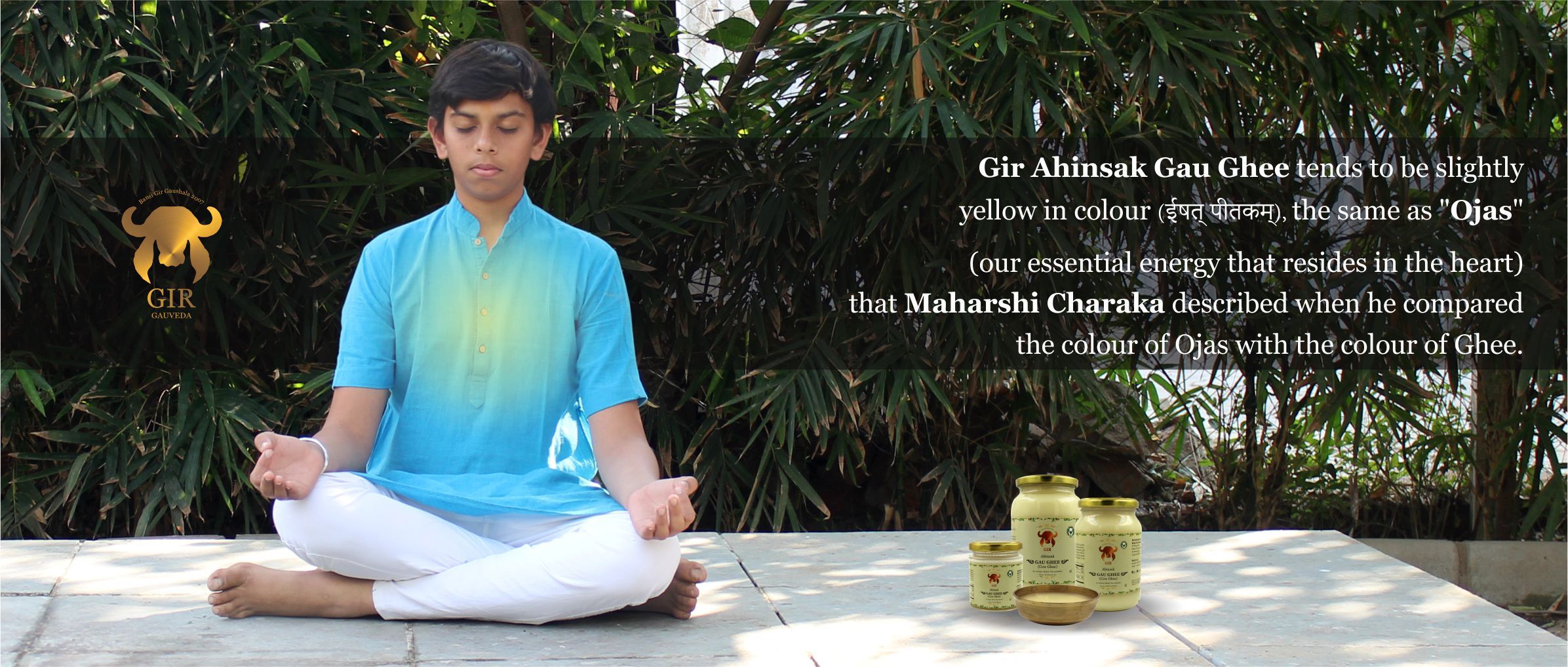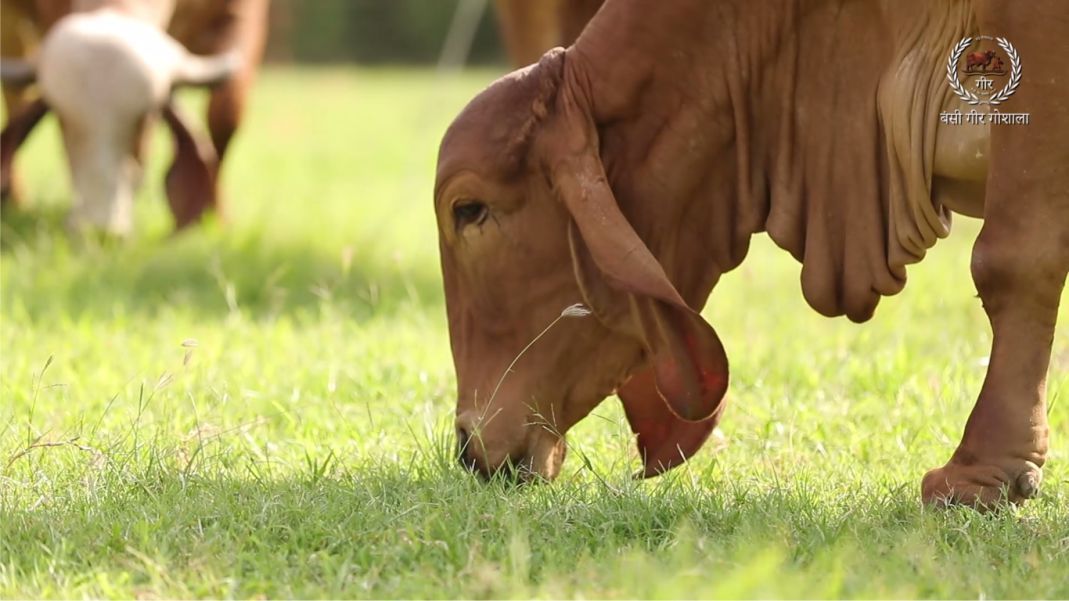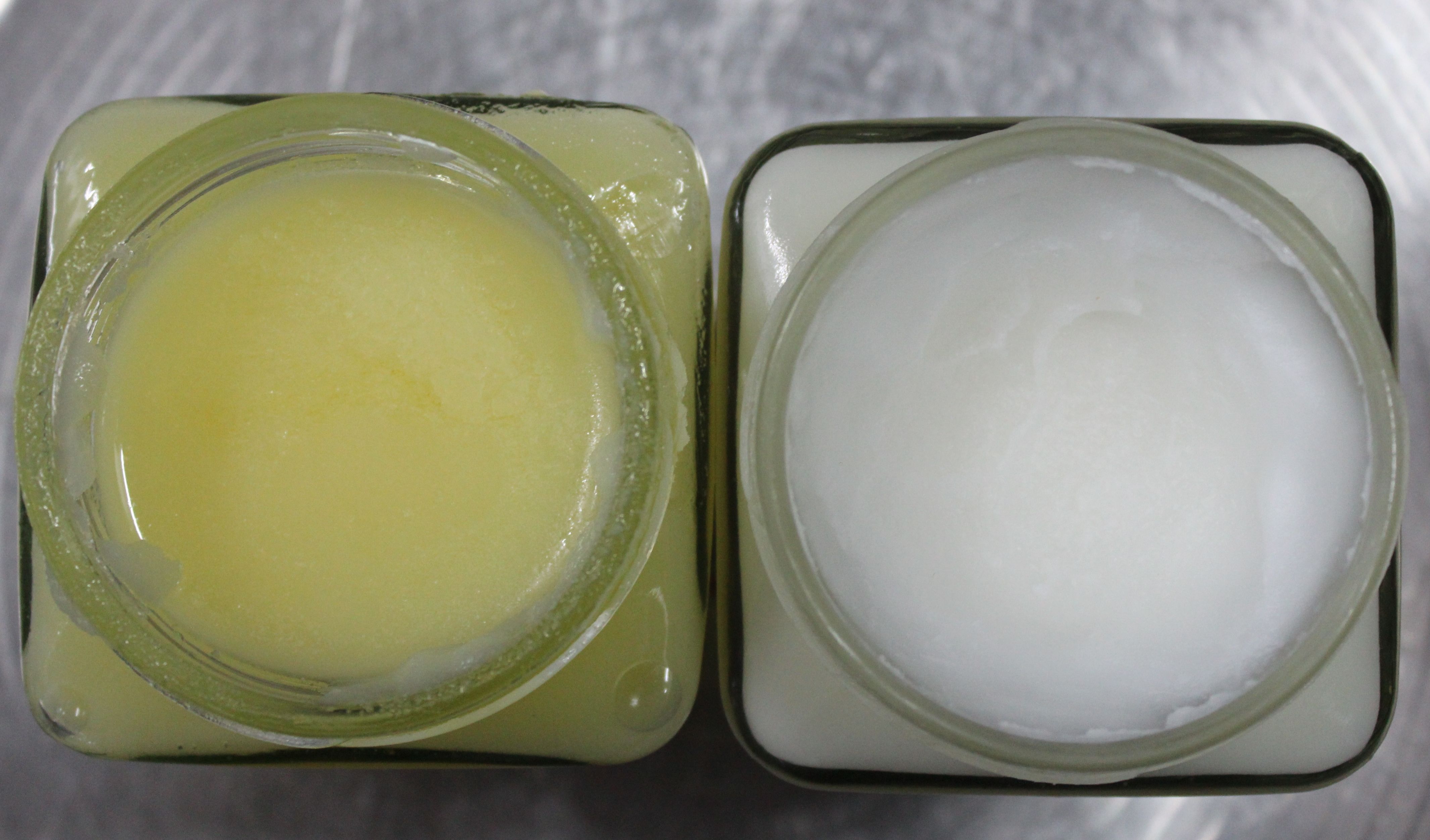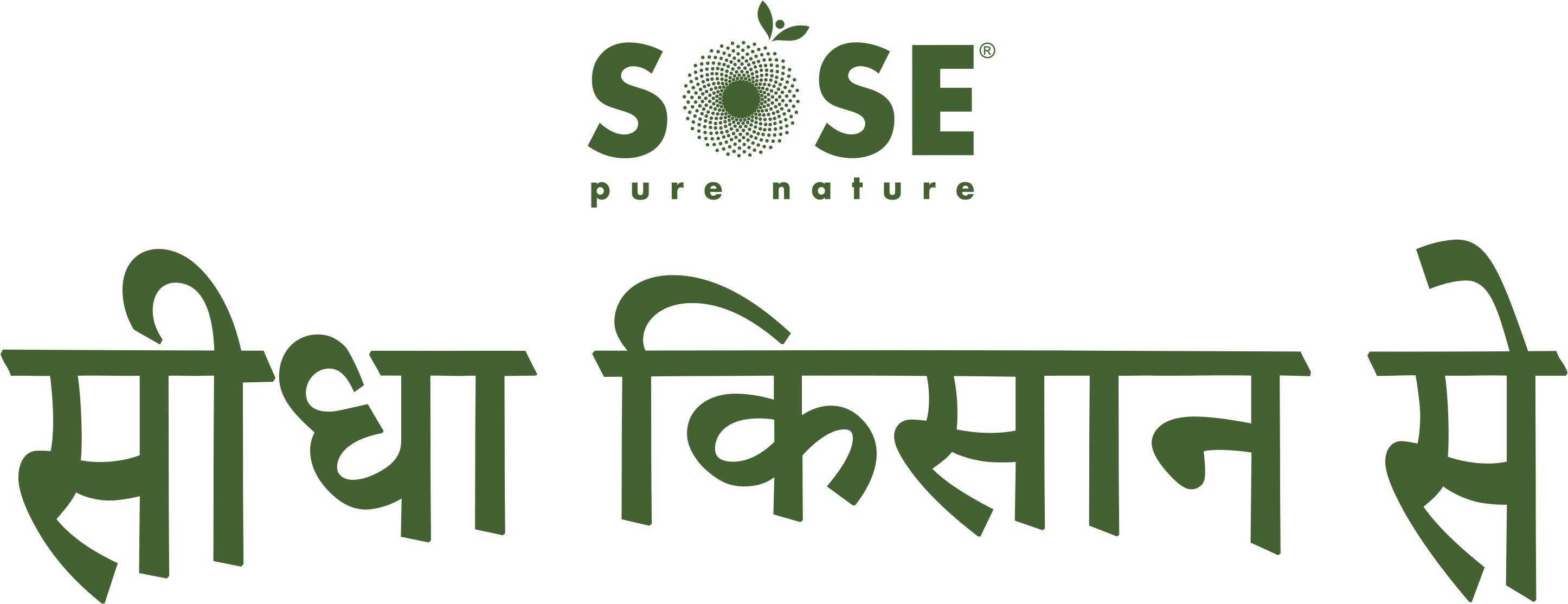By Bansi Gir Gauveda
One popular confusion among consumers pertains to the colour of ‘Cow’ Ghee', which people presume to always be a distinct yellow. However, there is no such rule, and perhaps the colour of Ghee assumes secondary significance. We present some interesting facts based on Ayurvedic principles and our own experiences, and recommend what consumers should look for.
Gir Ahinsak Gau Ghee is an outcome of a long process that begins with strict standards of maintaining purity of breed & their genetic diversity, non-exploitative Vedic Gopalan, offering pure & ethically grown feeds to Gaumata, adhering to ancient Bharatiya practice of Dohan and finally making the Ghee using Bilona process. It is a pristine gift of Nature and a blessing of Gaumata (for related article, click here).
Gir Ahinsak Gau Ghee usually tends to be slightly yellow in colour, the same colour as “Ojas” (our essential energy that resides in the heart). In Charaka Samhita, Maharshi Charaka compares the colour of Ojas with that of Ghee using the words “ईषत् पीतकम्” meaning “less yellow”. Though this is also not the strict rule. We present below some facts which are based on our own experiences as well as feedback from leading Ayurvedacharyas of Bharat. The colour of Ghee depends upon the following factors –


Figure 1 - Maharshi Charak compares the colour of Ojas with the colour of Ghee, using the words 'ईषत् पीतकम्', meaning 'less yellow'.
1) Feed of Gaumata - variety of feed is the key
The colour of milk & Ghee can vary depending upon what the Gaumata eats. A diet which has higher levels of Carotene lends a characteristically sharp yellow colour to the Ghee. Carotene is a fat soluble vitamin that often lends its colour to milk cream as well as Ghee. Carotene is generally found in green vegetation, and in excess is not always desirable. For example, in human beings excessive consumption of carotene in situations of weak digestion can lead to a condition called carotenosis which is characterized by increased carotene levels in blood.
At the same time, the Gaushala has accumulated a high degree of expertise in grazing fields, and is on a mission to revive 'Gauchars', having researched over 100 varieties of grass. We find that the kind of rich grasslands & forests that were available for Gaumata to graze on in ancient times are now just not available at most locations. As a result, Gaumata's left to feed only on grazing fields usually end up feeding upon a limited variety of vegetation which are rich in carotene, but limited in other nutrients.
On the other hand, Gaumata who are offered a higher variety of foods such as green vegetation in grazing fields, dry hay and specially prepared feeds that include grains, seeds, jaggery, herbs, etc will be exposed to a more balanced nutritional profile with lower carotene and consequently lower yellowness in their milk cream & Ghee. From this perspective, the colour of Ghee indicates nothing more than Gaumata’s diet. The degree of yellowness neither reflects the quality of Ghee nor how the Gaumata has been cared for.
At Bansi Gir Gaushala – Gaumatas are fed a variety of foods which include grazing on land nurtured with pure & natural manure, ethically grown fresh greens & dried plants and feeds specially prepared using non-GMO cotton seeds, corn, millets, jaggery, Ayurvedic herbs, etc. As a result, Gir Ahinsak Gau Ghee tends to be slightly yellow or a combination of yellow & white in colour. This basically reflects the rich variety of diet which the Gaumatas are offered.


Figure 2 - Colour of ghee or milk may also reflect what the Gaumata eats - an ideal diet contains a mix of fresh greens, dry hay, variety of grains, seeds, minerals, etc
2) Breed of Gaumata - Colour of Ghee varies by Gaumata type & breed
The colour of Ghee can also change based on breed of Gaumata. This colour turns white sooner for certain very rare & special breeds which are highly prized in Ayurveda, can be slightly yellow to golden for some Gir & other desi (local) breeds. Ghee may also be yellow for foreign breeds such as Jersey, and white for Ghee of Buffalo's.
At Bansi Gir Gaushala - Ghee is made from pure breed desi Gir Gaumatas. As a result, the Gir Ahinsak Gau Ghee tends to be less yellow in colour. The Gaushala has a large population of Gaumatas belonging to very rare breeds, whose Ghee turns into a characteristic white colour soon after preparation, though these are primarily used by Bansi Gir Gauveda for making medicinal Ghee & supplements and usually does not find its way into regular batches of Gir Ahinsak Gau Ghee. For eg, Gir Ahinsak Nasya is entirely made from older Ghee of rare Gaumata breeds, and hence tends to be almost entirely white.
3) Age of Ghee - Older the Ghee, more potent & whiter it tends to be
Ghee changes colour as it ages and becomes whiter as it gets older. This is completely natural, and in fact highly desirable in Ayurveda. ‘Purana Ghrit’ or ‘Old Ghee’, i.e. Ghee which has aged for between 1-100 years has been assigned great significance in Ayurveda for its tremendous healing qualities. Purana Ghrit also tends to become less yellow or completely white in colour as it gets older. In fact, the less yellow or more white the Purana Ghrit the more potent it is considered to be. According to Charaka Samhita, Old Ghee alleviates intoxication, fainting, poisoning, fever, epilepsy and pain.
At Bansi Gir Gaushala – Purana Ghrit is added to specialized medicinal Ghrit preparations to make highly effective ghee formulations such as Asthigir Ghrit, Phala Ghrit, Mahatriphala Ghrit, etc. Colour of Gir Ahinsak Gau Ghee may get whiter as it ages, a highly desirable quality in Ayurveda.


Figure 3 - Here's a comparison of freshly prepared Gau ('Cow') Ghee with older Gau Ghee - Gau Ghee does & should get whiter as it ages, a desirable quality.
4) Health of Gaumata - colour & taste of milk may also reflect doshic imbalances
According to Charaka Samhita, milk of healthy Mothers is generally sweet, warm and white with a natural taste. Doshic imbalance can lend milk and its cream a different colour, smell and taste depending upon the dominant dosha, including yellow which may result from Pitta imbalance. Excessive exposure to the sun and resulting loss of water may also lend milk or Ghee higher intensity of yellow colour though this is not the generalized case.
At Bansi Gir Gaushala – Gaumata’s are looked after in accordance with ancient Vedic traditions, which is ethical & non-exploitative. As mentioned earlier, Gaumatas are also fed a rich variety of foods that are rich in natural nutritents. As a result, Gaumatas tend to be healthier compared with conventional dairy industry “cattle”, with some Gaumatas also giving milk at the age of 22 years after giving birth to 16 calves. So the colour of milk and Ghee is completely natural and healthy, consistent with what ancient Ayurvedacharya’s would approve.
